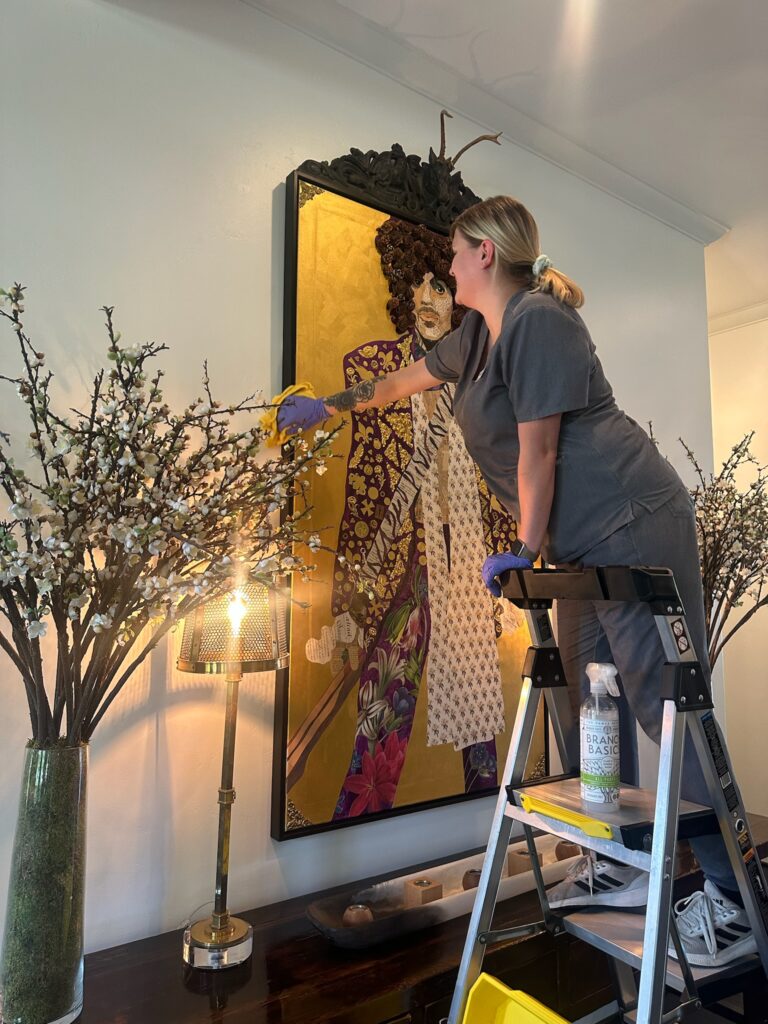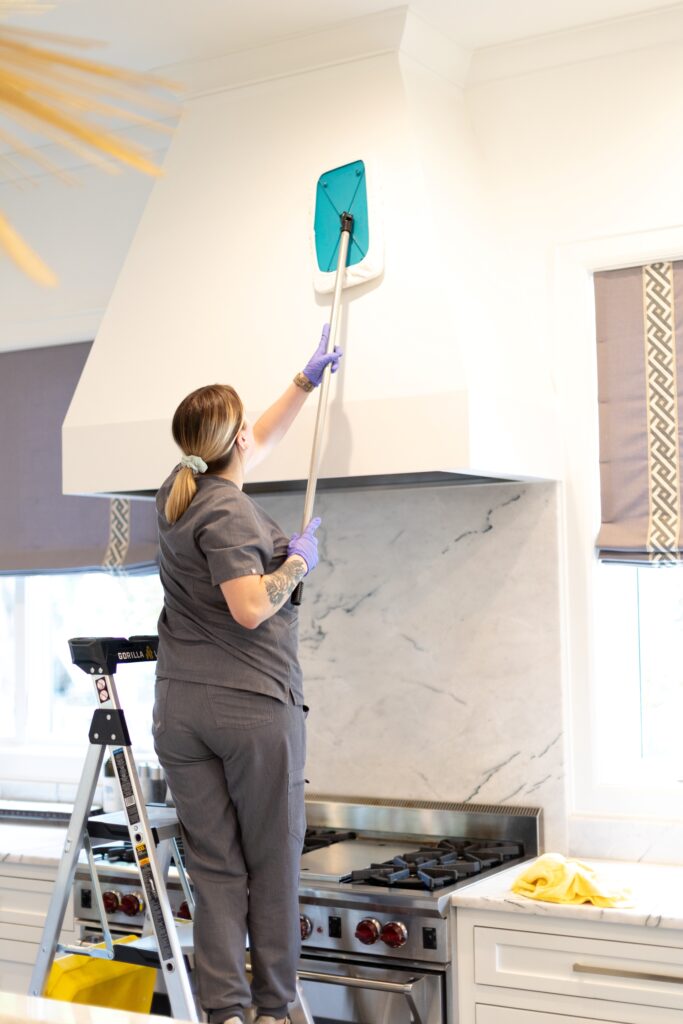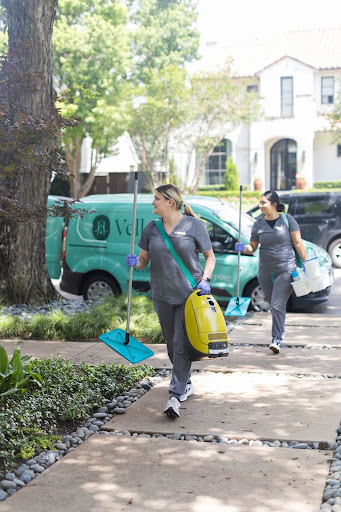How to Prevent Mold & Mildew in Texas Hill Country Homes

Summers in the Texas Hill Country are no joke. With our humid climate, stone-built homes, and occasional spring storms, it won’t be long before a musty smell creeps in. We’ve all been there, that telltale damp scent that alerts us that mold or mildew might be getting started. Left unchecked, mold can ruin our walls, irritate our lungs, and cost us in repair bills.
That’s why we’re sharing seven tested and proven science-backed tips to clean mold, remove mildew buildup, and keep your home smelling fresh all year round. These aren’t vague internet hacks. They’re proven strategies from our team and Vella’s eco-cleaning experts who know precisely what homes in the Texas Hill Country are dealing with.
Reasons For Mold Being So Common in Texas Hill Country Homes
Weather, specifically during the humid months after the spring rains, makes the area primed for mold spores to flourish. Almost all houses have a limestone foundation, which, although a great material, is porous and allows moisture to accumulate. Areas like basements, attics, and crawl spaces, if not furnished with proper ventilation, will act as sponges and hold moisture; Moreover, they will build up, unnoticed and potentially cause damage.
When the off-season comes along and the HVAC system is not used for a while, the humidity will still be there inside for a longer time. Unsealed windows and poor insulation also trap moisture, ideal breeding grounds for mold behind walls, under sinks, or along grout.
What is the Difference Between Mold and Mildew?
Know the key difference:
- Mildew is white or light gray and powdery. It’s simpler to clean mildew, and it is most often found on tile or window surfaces.
- Other types of mold are darker ones, being black, green, or even brown, with a fuzzy texture. They penetrate deep inside practically everything: walls, insulation, and ceilings.
Both can be dangerous. Mold exposure has reputedly caused allergies, asthma attacks, and irritation of the skin. Mildew is less aggressive, but it can still degrade air quality and trigger sneezing or sinus congestion.
How to Prevent Mold Growth in Your Bathrooms, Kitchens, and Basements
Those three spaces are mold magnets. With the proper routine, we can avoid mold before it becomes an issue.
- Ventilation is your best friend. Use the bathroom exhaust fans during and after the shower. Run your kitchen vent hood when cooking. Open the windows when the weather allows.
- If you have a basement, laundry room, or any other place where dampness collects, install a dehumidifier! Ideally, your indoor humidity will be less than 50%.
- Natural mold blockers such as tea tree oil, vinegar, and hydrogen peroxide are excellent for weekly maintenance. Just don’t overdo the vinegar on porous stone.

Our weekly checklist:
- Wipe tile and glass with a microfiber cloth
- Dry out shower corners and window sills
- Inspect under sinks and around your washer for drips or dampness
How to Safely Clean Mold & Mildew
How can you clean mold safely and eco‑friendly way? For small patches, white vinegar is your best bet. Spray directly on the area with white vinegar and let sit for an hour, which will break the mold down naturally. If you wanted to get even more cleaning power, you could also distribute some baking soda on the spot.
Afterward, lightly rub the place with a soft brush or a sponge. Then, remove the residue and check if the place is still dry so that the mold will not recur.
Avoid bleach for porous surfaces like drywall or grout as it kills surface mold but won’t reach deeper, and can add moisture back in.
We only use green products. Some of our favorites include:
- Bon Ami is a non-toxic, mild abrasive ideal for stubborn grout stains, safe for most hard surfaces when used gently
- Branch Basics all-purpose cleaner is plant‑based, fragrance-free, and effective against mold on non-porous surfaces.
- Seventh Generation Dish Soap is a miracle worker in the bathroom scum and greasy kitchen nooks.
We provide thorough cleaning services extending to such mold-prone spaces as window frames and shower corners, using the proper non-toxic equipment. Our service is not limited to Texas Hills Country, we also offer services in Dallas, Fort Worth, Austi, and Plano.
Seasonal Maintenance Tips to Prevent Mold in Texas Homes Year-Round

A little prevention every season will save you a major headache later. That is why we have a year-round mold prevention program to make our homes in the Texas Hill Country dry and clean. In the spring, We examine roof lines, clear out gutters, apply roof waterproofing measures, and reseal cracked caulking around windows and doors.
Summer is the season to deep clean A/C vents and filters, as water seeps into those hidden spaces. In autumn, we check attic insulation and ensure crawl space vapor barriers are still working. In winter, we watch for window and pipe condensation and dry them out, insulating them as needed.
If you’re not sure where to start, we’ve got you. Check out our seasonal cleaning services for Texas homes to help you stay ahead of the mold.
Mold-Resistant Materials & Renovation Ideas for Humid Climates
Remodeling or upgrading on a small scale? Here are some intelligent options for our climate:
- It is recommended that you apply anti-mold paint in your bathrooms and laundry rooms. This paint is mold and water-resistant.
- Choose tiles or sealed concrete in basements or mud rooms, instead of carpet.
- Opt for mold-proof drywall in wet areas.
- Think of intelligent sensors that monitor humidity and notify you about leaks – some even integrate with your phone.
- We have witnessed how these improvements can work magic in making sure our clients’ homes smell fresh, especially when used in accordance with a regular cleaning schedule.
FAQ
Q. How do I know if it’s mold or dirt?
It can do so, particularly with moisture mismanagement. That’s why it’s important to clean mold and fix leaks, improve ventilation, and dry surfaces properly.
Q. Does mold return once cleaned?
It can, especially if you do not control moisture. That is why it is essential to clean mold, fix leaks, open ventilation, and dry surfaces well.
Q. How much humidity is appropriate for homes in Texas?
Aim for 30-50% humidity indoors. Get a dehumidifier if the relative humidity in your home consistently exceeds that, particularly in basements or bathrooms.
Q. What happens if one breathes in mildew to a large extent?
Mildew spores can trigger allergies and asthma, particularly in sensitive individuals.
Get Cleaning With Vella in Texas
Mold and mildew-free air and space begin with prevention. With the right habits and help, your home can be healthy through every season. You can book a Vella seasonal clean here to help protect your home from mold and mildew. We are here for your home in every season.